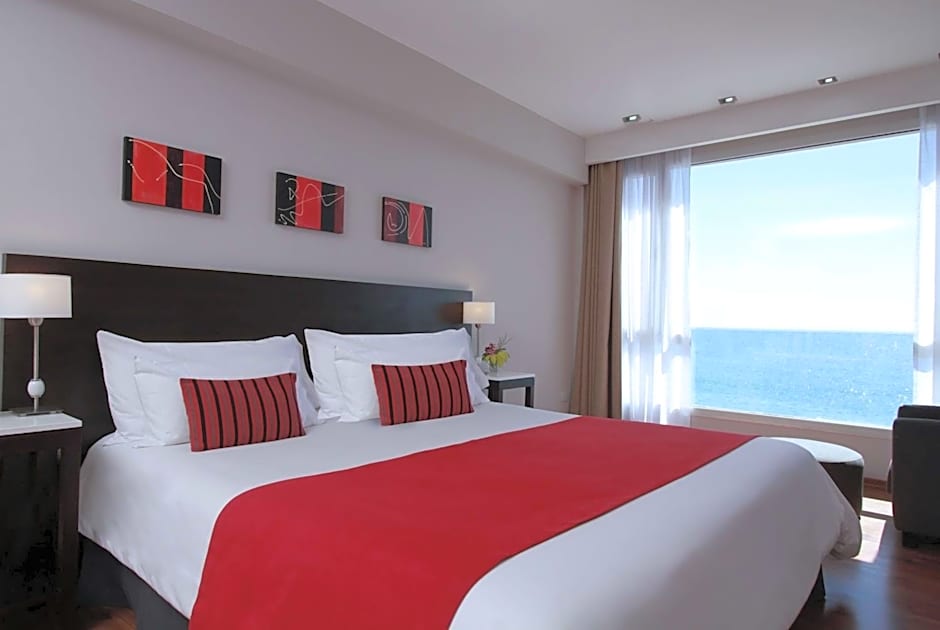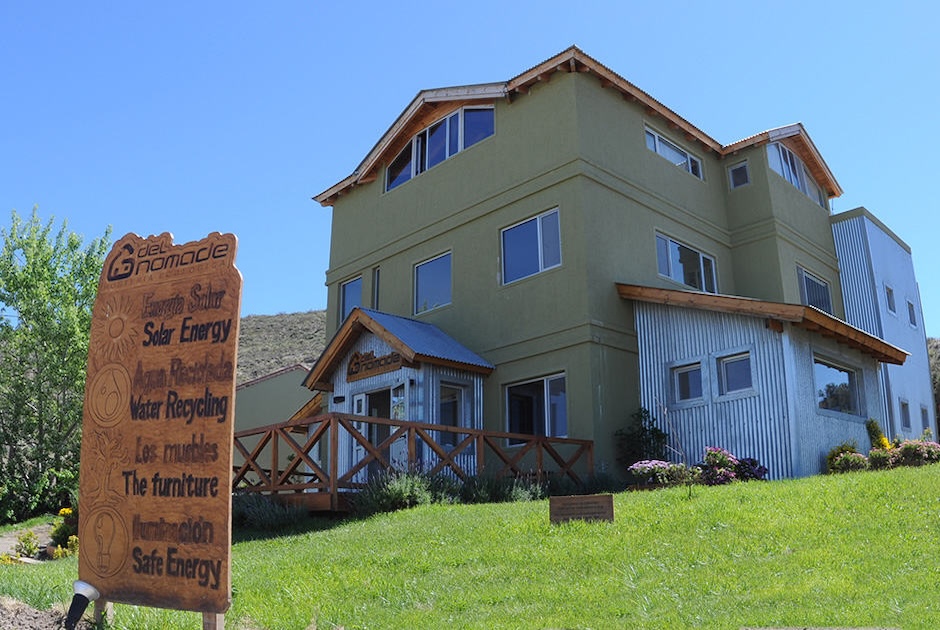ORCAS ATTACK
WITH PHOTOGRAPHER TOM SVENSSONCOUNTRY: Argentina PHOTO: Wildlife DURATION: 10 days DATES: March 16–25, 2027 PARTICIPANTS: 5/5
Join me in Argentina and photograph a unique event, as orcas hunt sea lions — almost driving them up onto the shore. We’ll get close to all the action through a special permit allowing us to be directly on the beach, access normally reserved only for film crews and publications such as National Geographic.
Tom Svensson
Join us on an exclusive photo trip with a maximum of five participants – an extraordinary opportunity to capture dramatic action shots as orcas hunt and attack sea lions at close range. This unforgettable experience combines excitement, closeness to nature, and world-class photo opportunities – tailor-made for those who seek something truly exceptional.
Join the award-winning conservation photographer Tom Svensson on a very special photo expedition to Argentina. In the wild Chubut Province estuary, we encounter the fascinating Commerson’s dolphins – fast, black-and-white, and unusual, often called “the pandas of the sea.”
At Punta Tombo, we’ll have the opportunity to photograph thousands of Magellanic penguins, and we’ll visit a secluded beach where elephant seals rest. This part of the journey offers encounters with sea lions, dramatic nature, and a magical evening of photography in the golden light.
The second part of the trip takes us to Valdes Peninsula, where our main goal is to photograph orcas. Every year, these magnificent predators come close to the shore to hunt young sea lions directly from the beach – a unique opportunity for extraordinary wildlife photography.
A highlight of the tour is photographing at the so-called “attack channel” – a narrow beach section with underwater shelves where much of the hunting takes place. The beach and surroundings are normally closed to the public but opened especially for professional teams from TV companies and magazines such as National Geographic.
During the trip, Tom shares his unique knowledge about orcas and their hunting behavior. With inspiring lectures, image reviews, and constructive feedback as well as practical guidance in the field – all to help you develop as a photographer and make the most of this extraordinary journey.
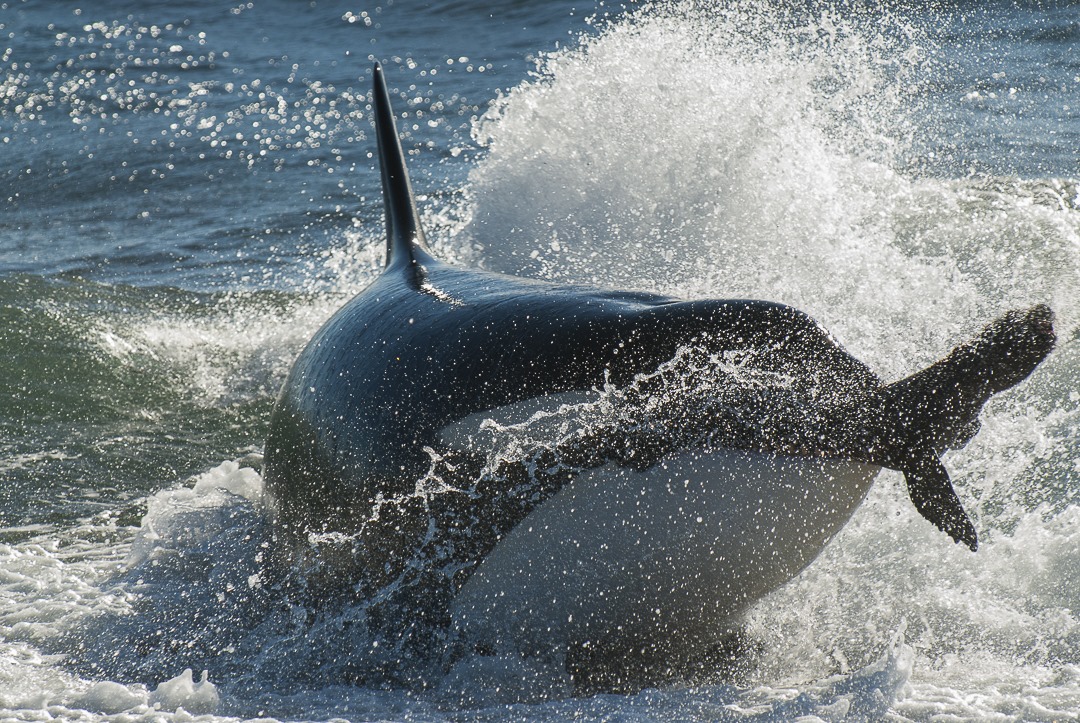
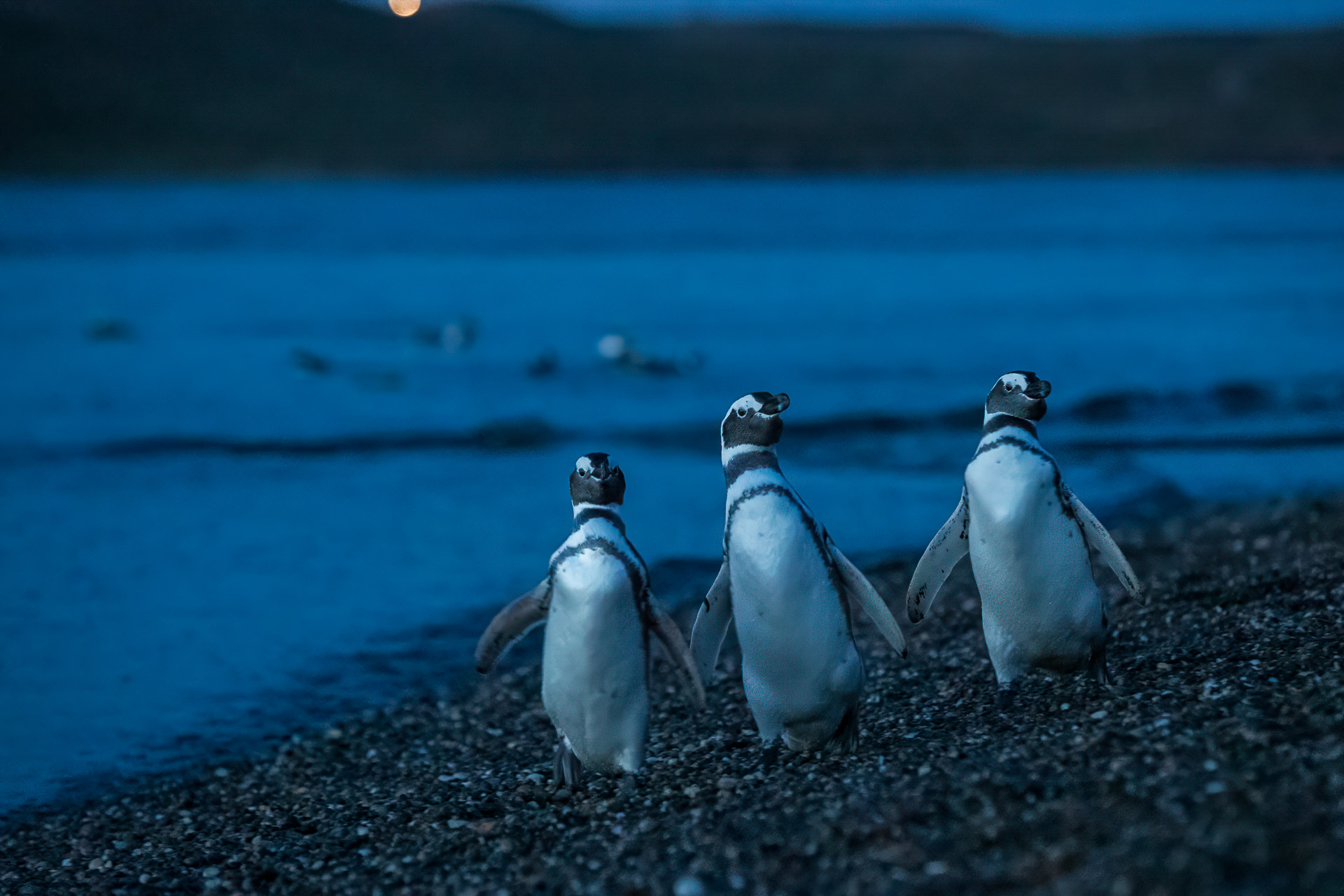
TRIP HIGHLIGHTS
- Photography of attacking orcas at very close range.
- Special permission to photograph on the beach in the “attack channel”.
- Close encounters with Rockhopper and Magellanic penguins.
- Elephant seals and sea lions.
- The very rare Commerson’s (skunk) dolphin.
- Boat trip on the Chubut River in search of Commerson’s dolphins.
- Fantastic photo opportunities of one of the world’s smallest and fastest dolphin species.
- The large Magellanic penguin colony at Punta Tombo.
- Evening photography of elephant seals at sunset.
- South American sea lions and cormorants.
- Punta Pirámides – a large sea lion colony and opportunities to photograph coastal birds such as the Snowy Sheathbill and Dolphin Gull.
- Rich birdlife throughout the journey.
- Only five participants for an exclusive experience.
- Led by conservation photographer Tom Svensson.
- Lectures and image reviews with personal guidance from Tom Svensson.
COUNTRY: Argentina PHOTO: Wildlife DURATION: 10 days DATES: March 16–25, 2027 PARTICIPANTS: 5/5
Join me in Argentina and photograph a unique event, as orcas hunt sea lions — almost driving them up onto the shore. We’ll get close to all the action through a special permit allowing us to be directly on the beach, access normally reserved only for film crews and publications such as National Geographic.
Tom Svensson
Join us on an exclusive photo trip with a maximum of five participants – an extraordinary opportunity to capture dramatic action shots as orcas hunt and attack sea lions at close range. This unforgettable experience combines excitement, closeness to nature, and world-class photo opportunities – tailor-made for those who seek something truly exceptional.
Join the award-winning conservation photographer Tom Svensson on a very special photo expedition to Argentina. In the wild Chubut Province estuary, we encounter the fascinating Commerson’s dolphins – fast, black-and-white, and unusual, often called “the pandas of the sea.”
At Punta Tombo, we’ll have the opportunity to photograph thousands of Magellanic penguins, and we’ll visit a secluded beach where elephant seals rest. This part of the journey offers encounters with sea lions, dramatic nature, and a magical evening of photography in the golden light.
The second part of the trip takes us to Valdes Peninsula, where our main goal is to photograph orcas. Every year, these magnificent predators come close to the shore to hunt young sea lions directly from the beach – a unique opportunity for extraordinary wildlife photography.
A highlight of the tour is photographing at the so-called “attack channel” – a narrow beach section with underwater shelves where much of the hunting takes place. The beach and surroundings are normally closed to the public but opened especially for professional teams from TV companies and magazines such as National Geographic.
During the trip, Tom shares his unique knowledge about orcas and their hunting behavior. With inspiring lectures, image reviews, and constructive feedback as well as practical guidance in the field – all to help you develop as a photographer and make the most of this extraordinary journey.

TRIP HIGHLIGHTS
- Photography of attacking orcas at very close range.
- Special permission to photograph on the beach in the “attack channel”.
- Close encounters with Rockhopper and Magellanic penguins.
- Elephant seals and sea lions.
- The very rare Commerson’s (skunk) dolphin.
- Boat trip on the Chubut River in search of Commerson’s dolphins.
- Fantastic photo opportunities of one of the world’s smallest and fastest dolphin species.
- The large Magellanic penguin colony at Punta Tombo.
- Evening photography of elephant seals at sunset.
- South American sea lions and cormorants.
- Punta Pirámides – a large sea lion colony and opportunities to photograph coastal birds such as the Snowy Sheathbill and Dolphin Gull.
- Rich birdlife throughout the journey.
- Only five participants for an exclusive experience.
- Led by conservation photographer Tom Svensson.
- Lectures and image reviews with personal guidance from Tom Svensson.
PATAGONIA
PATAGONIA
Patagonia is the southernmost region of South America, spanning both Chile and Argentina. The area borders two oceans – the Pacific to the west and the Atlantic to the east. Patagonia covers a total area of about 1,043,000 km², with roughly 75% located in Argentina and the remainder in Chile.
In the west, you’ll find the adventurous peaks of the Andes, while in the east stretches an immense plateau characterized by desolate yet magnificent landscapes. At the foot of the Andes lies a series of large lakes, including Lago Nahuel Huapi, Lago Buenos Aires, Lago San Martín, Lago Viedma, and Lago Argentino. From the mountains, several rivers flow eastward – among them the Colorado River, as well as Río Negro, Chubut, Deseado, Chico, and Coig. Some of these rivers end in inland salt lakes without outlets.
Patagonia encompasses a wide range of climate zones – from barren deserts and steppes to lush grasslands with sparse tree growth along the mountain slopes. In both the Andes and southern Patagonia, one can find flora reminiscent of that in Antarctica.
The eastern coast features gently indented bays – Golfo San Matías, Golfo San Jorge, and Bahía Grande. Here, the coastline consists of sandstone cliffs 100–150 meters high, layered almost horizontally and covered by younger strata topped with Ice Age deposits between 6 and 9 meters thick.
Inland, a vast high plateau stretches toward the coast, gradually sloping downward with an average elevation of 400–500 meters.
Patagonia is rich in mammals, including guanacos, pumas, maras, wildcats, several species of foxes, otters, and various rodents.
The birdlife is abundant, featuring flamingos, condors, thrushes, long-tailed green parrots, hummingbirds, and a wide variety of water and seabirds, especially along the southern coast.
Puerto Madryn
Puerto Madryn is a vibrant yet relaxed coastal town that attracts both nature lovers and adventure travelers. It was founded in 1865 by Welsh immigrants, whose influence is still reflected in parts of the city’s culture and architecture. With a population of just over 100,000, it is one of the largest cities in the Patagonian region.
Puerto Pirámides
Puerto Pirámides is a small and charming coastal village located on Península Valdés, a protected nature reserve and UNESCO World Heritage Site in the province of Chubut, Argentina. Despite its modest size – with only around 500 inhabitants – it is one of South America’s premier destinations for nature lovers, photographers, and ecotourists. The light conditions, landscapes, and abundant wildlife make Puerto Pirámides a dream destination for photographers.
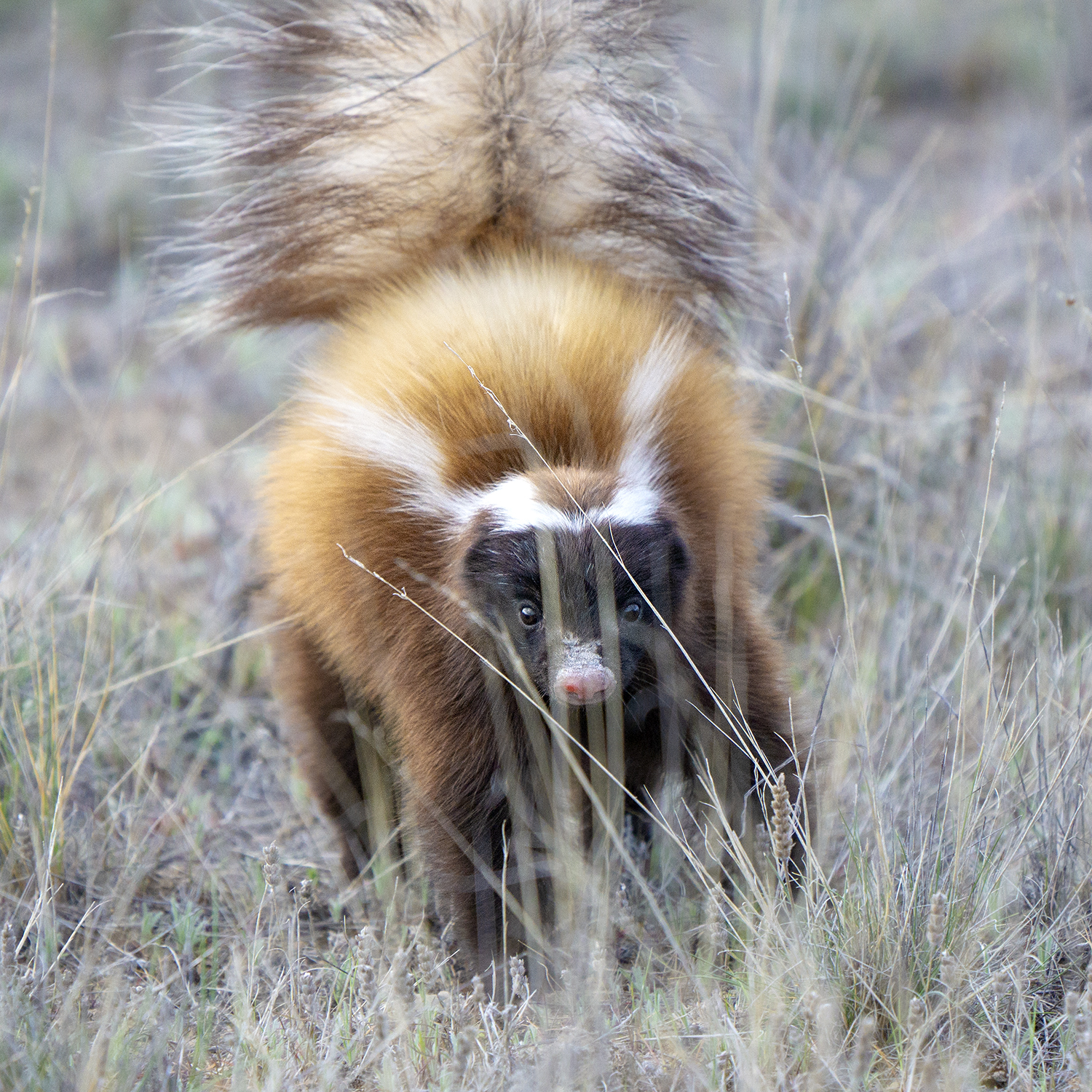
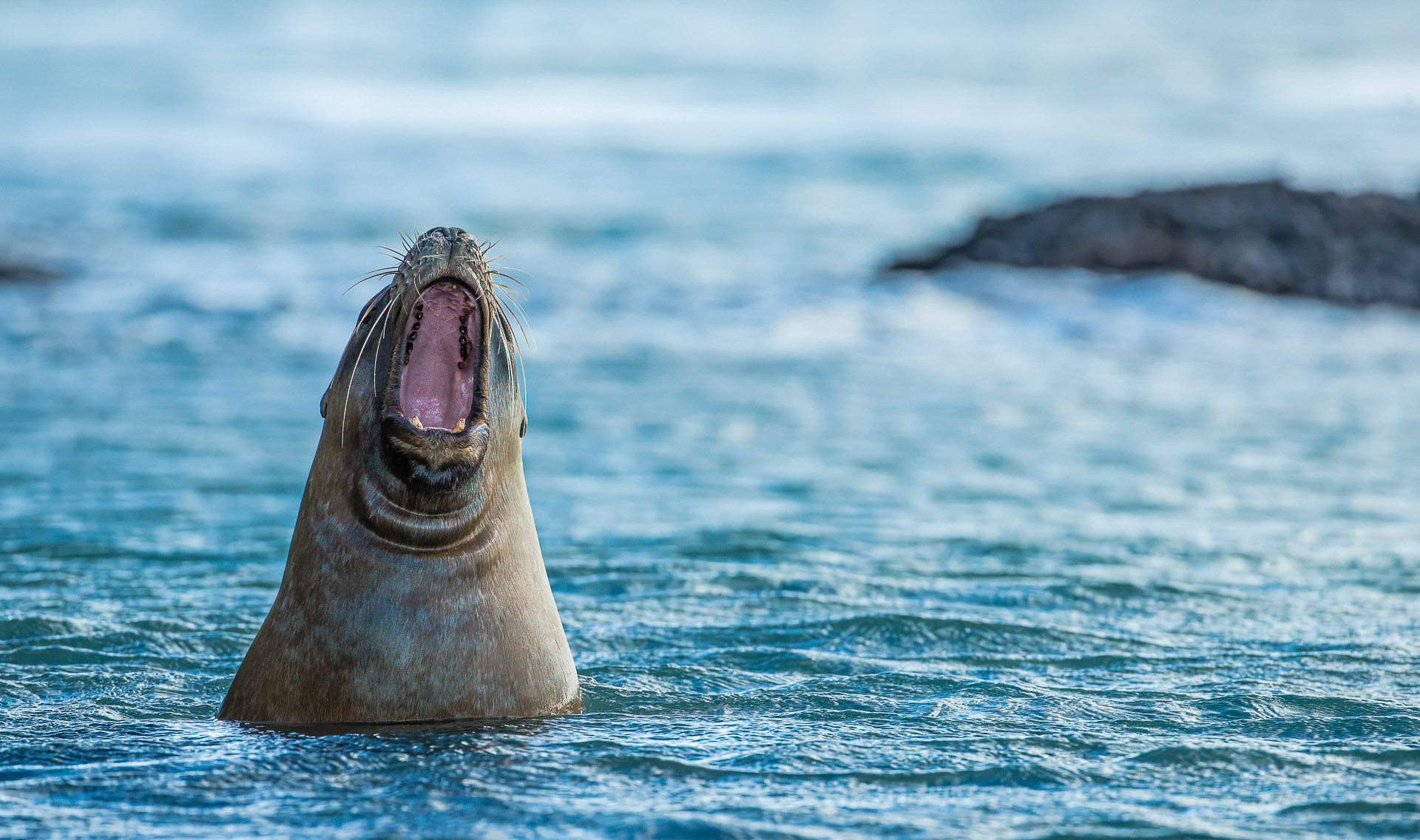
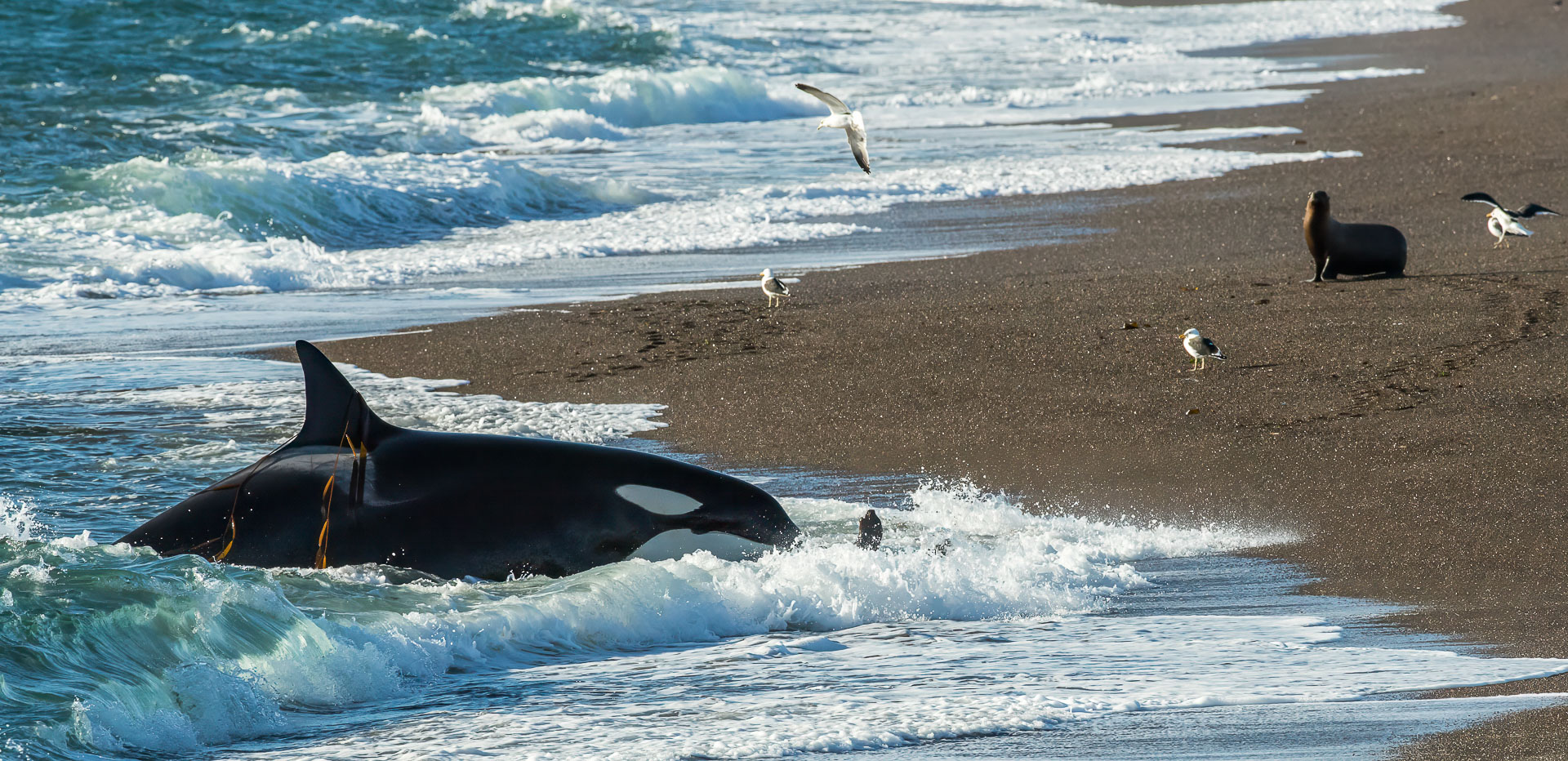
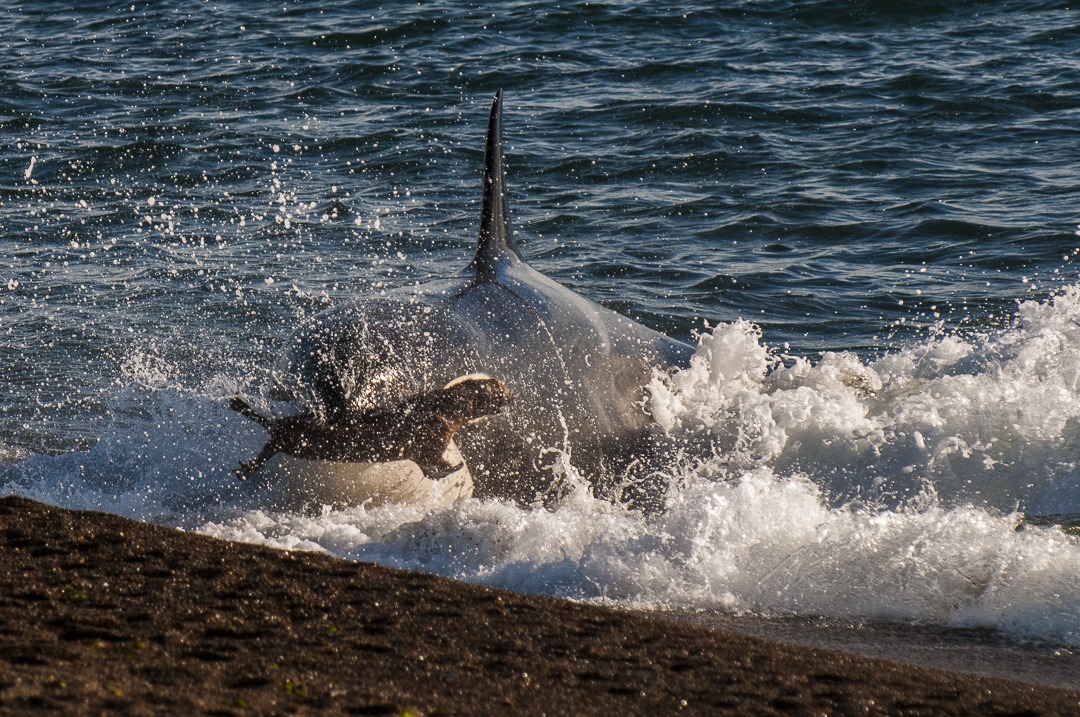
Here you can read more about Patagonia
Patagonia is the southernmost region of South America, spanning both Chile and Argentina. The area borders two oceans – the Pacific to the west and the Atlantic to the east. Patagonia covers a total area of about 1,043,000 km², with roughly 75% located in Argentina and the remainder in Chile.
In the west, you’ll find the adventurous peaks of the Andes, while in the east stretches an immense plateau characterized by desolate yet magnificent landscapes. At the foot of the Andes lies a series of large lakes, including Lago Nahuel Huapi, Lago Buenos Aires, Lago San Martín, Lago Viedma, and Lago Argentino. From the mountains, several rivers flow eastward – among them the Colorado River, as well as Río Negro, Chubut, Deseado, Chico, and Coig. Some of these rivers end in inland salt lakes without outlets.
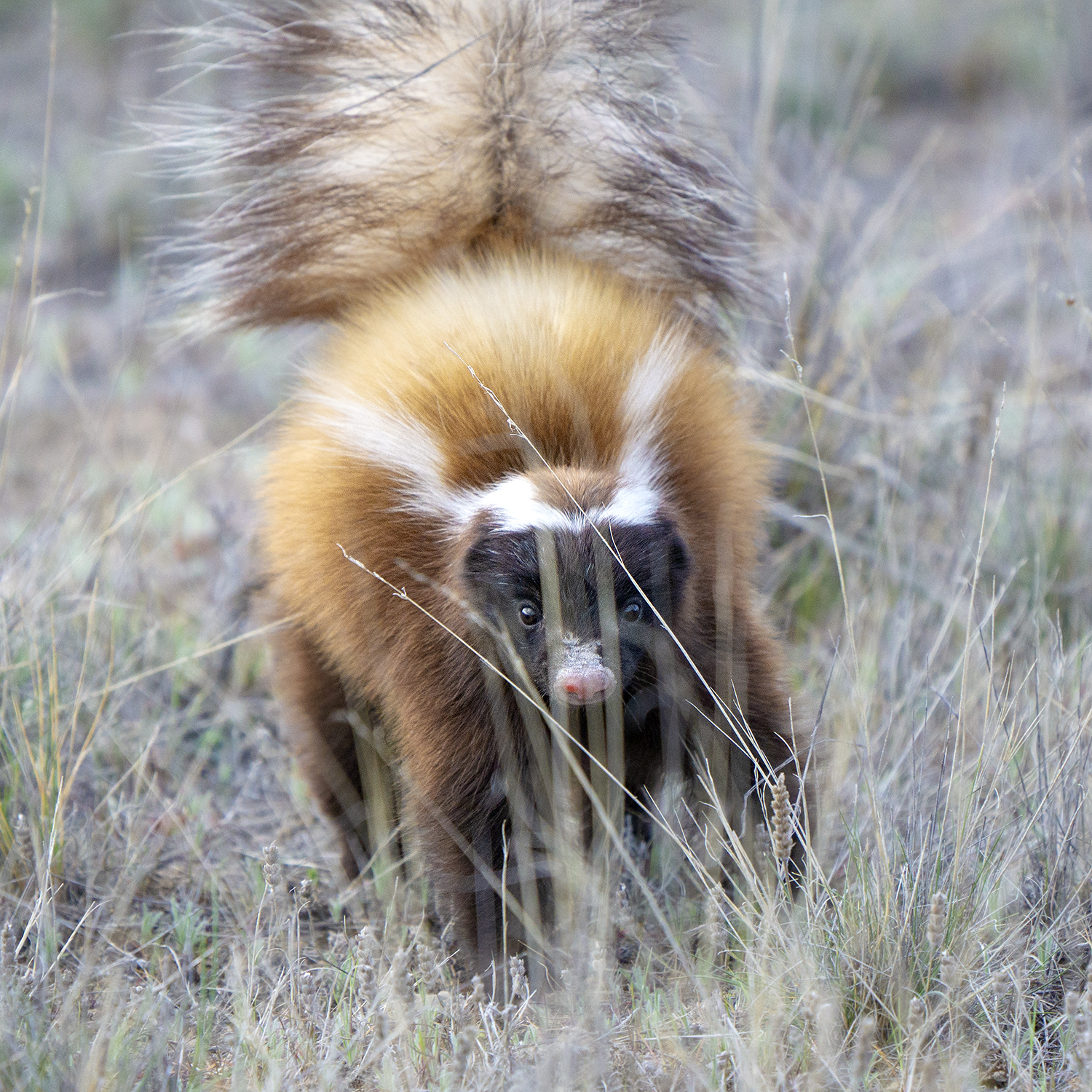
Patagonia encompasses a wide range of climate zones – from barren deserts and steppes to lush grasslands with sparse tree growth along the mountain slopes. In both the Andes and southern Patagonia, one can find flora reminiscent of that in Antarctica.
The eastern coast features gently indented bays – Golfo San Matías, Golfo San Jorge, and Bahía Grande. Here, the coastline consists of sandstone cliffs 100–150 meters high, layered almost horizontally and covered by younger strata topped with Ice Age deposits between 6 and 9 meters thick.
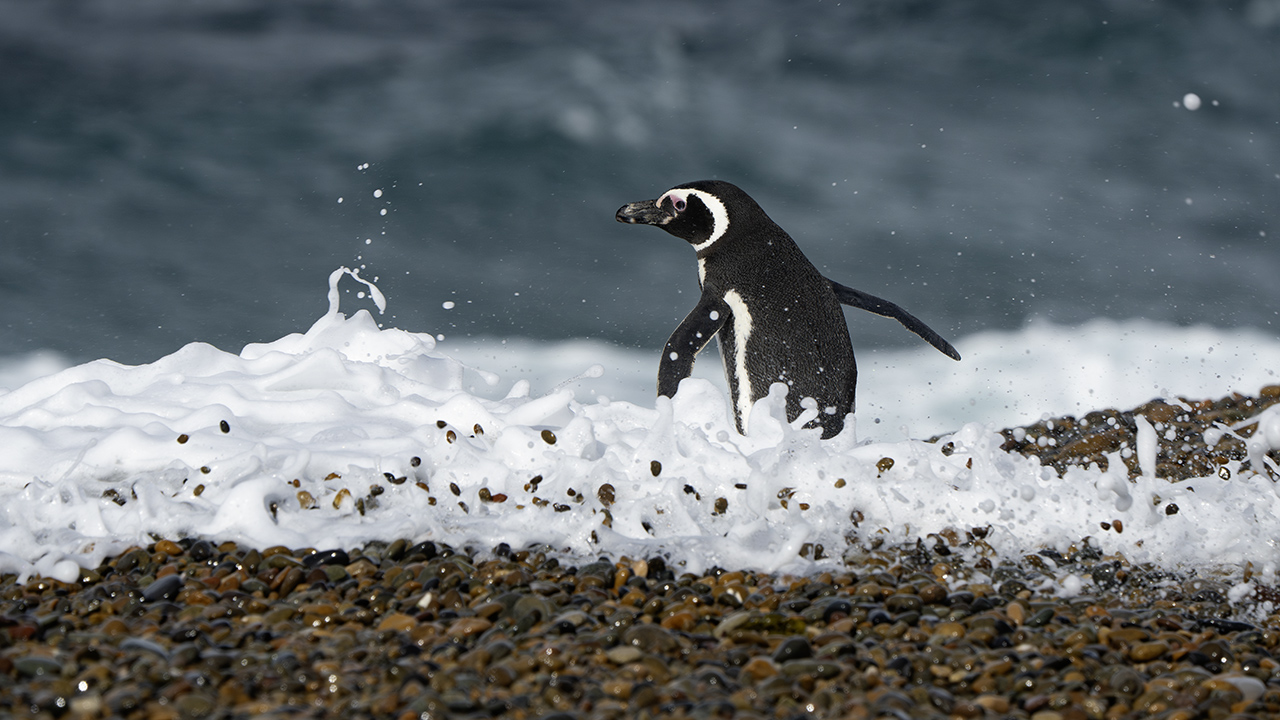
Inland, a vast high plateau stretches toward the coast, gradually sloping downward with an average elevation of 400–500 meters.
Patagonia is rich in mammals, including guanacos, pumas, maras, wildcats, several species of foxes, otters, and various rodents.
The birdlife is abundant, featuring flamingos, condors, thrushes, long-tailed green parrots, hummingbirds, and a wide variety of water and seabirds, especially along the southern coast.
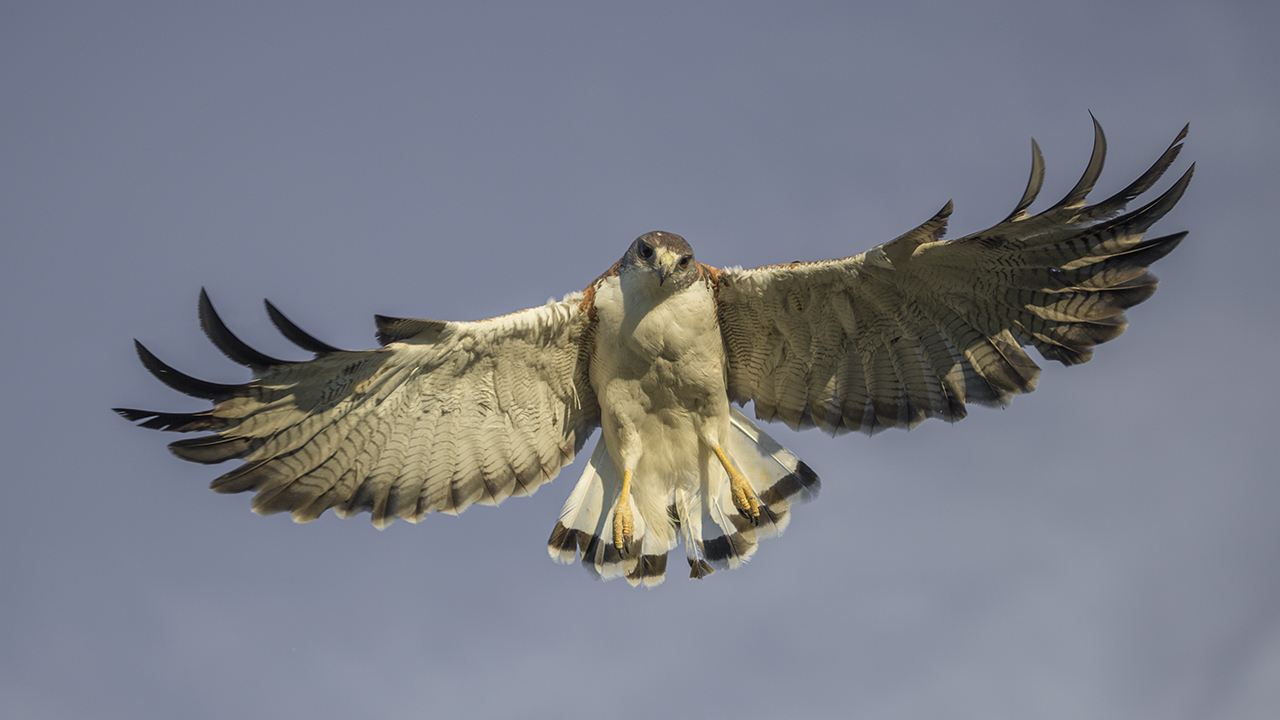
Puerto Madryn
Puerto Madryn is a vibrant yet relaxed coastal town that attracts both nature lovers and adventure travelers. It was founded in 1865 by Welsh immigrants, whose influence is still reflected in parts of the city’s culture and architecture. With a population of just over 100,000, it is one of the largest cities in the Patagonian region.
Puerto Pirámides
Puerto Pirámides is a small and charming coastal village located on Península Valdés, a protected nature reserve and UNESCO World Heritage Site in the province of Chubut, Argentina. Despite its modest size – with only around 500 inhabitants – it is one of South America’s premier destinations for nature lovers, photographers, and ecotourists. The light conditions, landscapes, and abundant wildlife make Puerto Pirámides a dream destination for photographers.
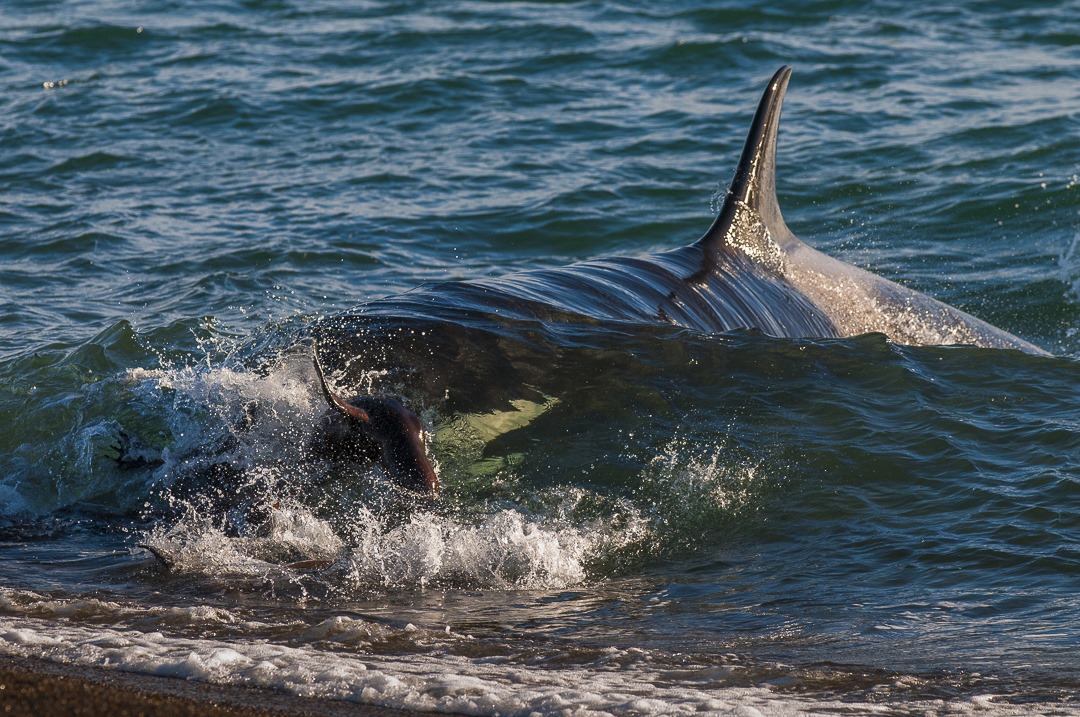
ITINERARY
ITINERARY
16-25 MARCH 2027
Throughout the trip, Tom Svensson will be available to offer photography advice and tips, as well as assistance with image editing and critique. Tom will also give lectures and share insights into his photographic approach. Exact times for these sessions will be arranged based on the photo activities. During the entire journey, you’ll have the opportunity to receive personal guidance from Tom.
DAY 1, (March 16) – ARRIVAL
On the first day you will be met at Trelew Airport. From there, a one‑hour bus ride takes us to Puerto Madryn, where we check into the first‑class Dazzler by Wyndham Puerto Madryn Hotel. The rest of the day is free to relax and settle in. Because of the time change, only an informal gathering will be held in the hotel bar for those who wish to attend.
DAY 2, (March 17) – DOLPHINS, PENGUINS & ELEPHANT SEALS
After breakfast we leave Puerto Madryn and head to the mouth of the Chubut River, where we embark on a boat trip in open water to look for the so‑called “pandas of the sea” — Commerson’s dolphins.
This species is one of the smallest dolphins in the world. Although relatively common in local feeding areas, it is still little known globally. The total population is still uncertain, but it is known to be decreasing due to overfishing, which reduces food availability, as well as incidental entanglement in fishing nets. Like all dolphins, they are incredibly fast and unpredictable, making them a fantastic challenge for photographers.
After the boat tour, with fresh memories and images, we continue south to Punta Tombo, one of the largest colonies of Magellanic penguins on the continent.
During the roughly 90‑minute drive we can relax and enjoy our packed lunch while the guide shares interesting facts about the penguins we will soon encounter.
The day ends in the beautiful evening light at Isla Escondida, a tranquil, non‑touristic beach about 120 km south of Puerto Madryn. Here you can often see groups of young elephant seals resting in the sun while they molt. (B, L, D)
DAY 3, (March 18) – SEA LIONS & MAGNIFICENT VIEWS
Today we visit the protected natural area Punta Loma, the first nature reserve established in the province of Chubut. It harbors a significant colony of South American sea lions and Magellanic cormorants, offering fantastic opportunities to observe and photograph these characteristic species along with the rich fauna living in the reserve.
Around lunchtime we arrive at Estancia El Pedral, where we enjoy a traditional Patagonian lamb barbecue, cooked over an open fire and served with the warm hospitality for which the ranch is known – accompanied, of course, by a glass of Argentine wine. After lunch we continue to Punta Ninfas, an impressive geographical landmark marking the transition between the Golfo Nuevo and the Atlantic. Here dramatic views of the coastal cliffs await and there is the possibility to descend to the beach to get close to the elephant seals.
Punta Ninfas is also known for occasional orca sightings, as these predators are often attracted to the area by the large number of elephant seals along the coast. We end the day with an exclusive evening visit to the penguin colony at Estancia El Pedral – a growing colony that, unlike many others, preserves its natural environment without any tourist infrastructure. Being in a penguin colony at sunset is truly one of the most unforgettable experiences Patagonia has to offer. (B, L, D)
DAY 4 (March 19) – TOWARDS PENINSULA VALDÉS
After breakfast, at a leisurely pace, we head toward Península Valdés, a protected natural area that has been designated a UNESCO World Heritage Site. During the journey our guide will share stories about the region’s history, the creation of the reserve, its current conservation status, and the ecological significance of the area.
Along the drive we make several stops to observe and photograph the local wildlife and vegetation. We also visit a visitor centre, where we can take a short break, use the facilities, and explore the informative exhibits — an excellent way to gain a deeper understanding of the peninsula’s history, geography, and unique ecosystems.
After checking into the Del Nómade Eco Hotel in Puerto Pirámides and having lunch at a local restaurant, we visit Punta Pirámides, a protected area that hosts one of the largest colonies of South American sea lions on the peninsula. This is also a fantastic place to photograph species such as the Snowy Sheathbill and Dolphin Gull, along with other characteristic coastal birds. (B, L, D)
DAY 5–9, (March 20–24) – ATTACK CHANNEL
Early every morning, we head out for a half-hour drive to Punta Norte and the beach known as “Attack Channel.” The day begins with us, in order not to disturb the sea lions, crawling out onto the beach where we set up our equipment for the day. We then stay there from about three hours before high tide until three hours after, waiting for the orcas to arrive. It’s common to see them swimming along the shore, hunting for sea lion pups playing in the waves — and the chance to witness an orca attack is truly worth the wait.
To make sure we don’t miss anything, we bring a picnic lunch with us to the beach. When we’re not photographing at Attack Channel, we go on photo excursions and have the opportunity to photograph everything from flocks of flamingos to elephant seals and much more. (B, L, D)
DAY 10, (March 25) – DEPARTURE
After breakfast, we head to the airport for our onward flight home. (B)
PHOTO OF THE TRIP
A few weeks after returning home, once you’ve had time to go through your photos from the trip, you’ll have the opportunity to submit your best images from the journey to Tom, who will select the “Photo of the Trip.” The winner automatically advances to the final of the “Photo of the Year 2027” competition and competes for great prizes.
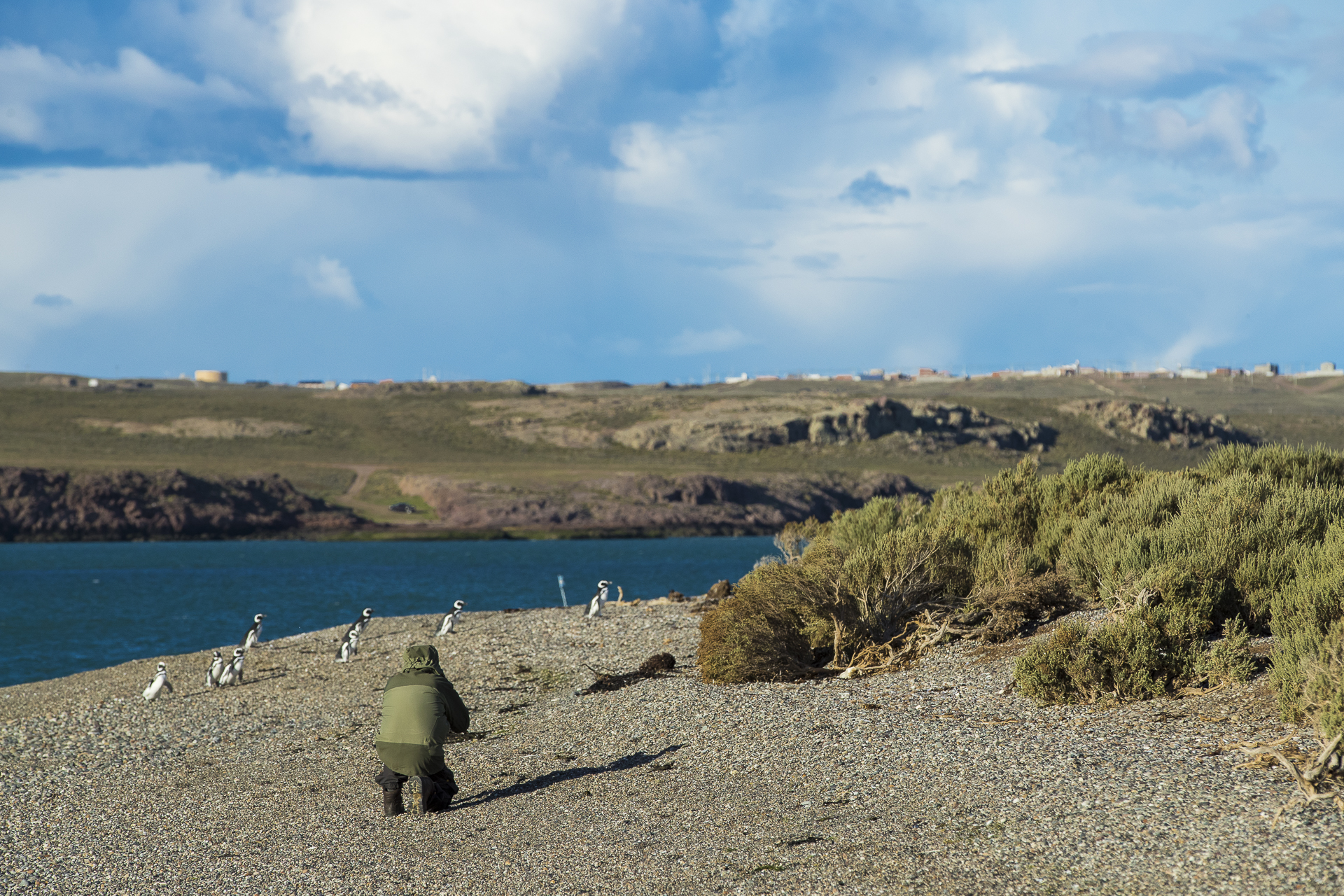

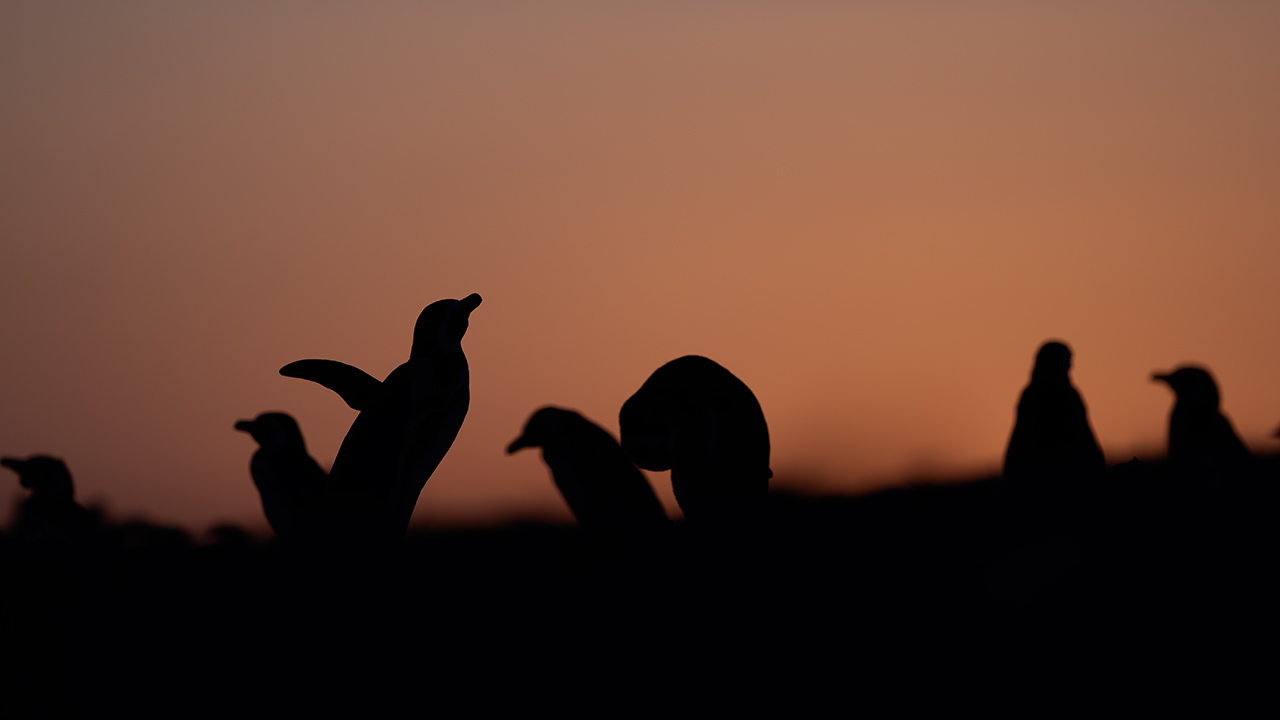

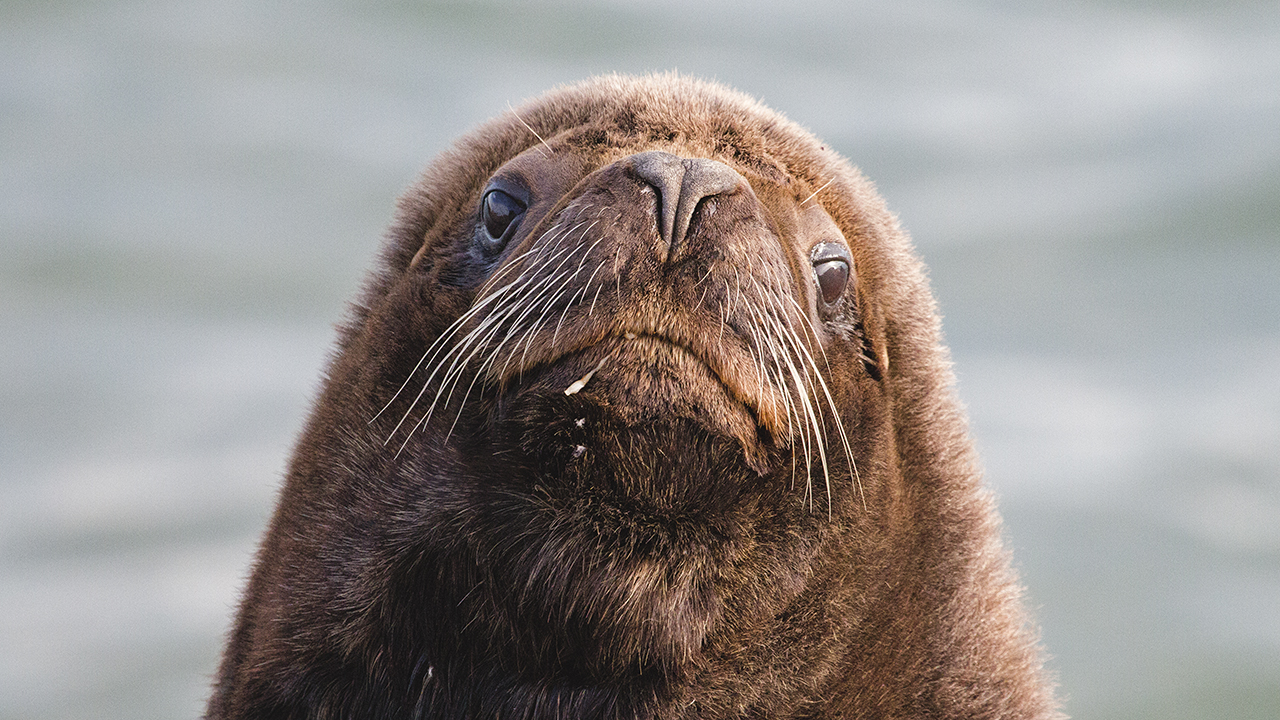

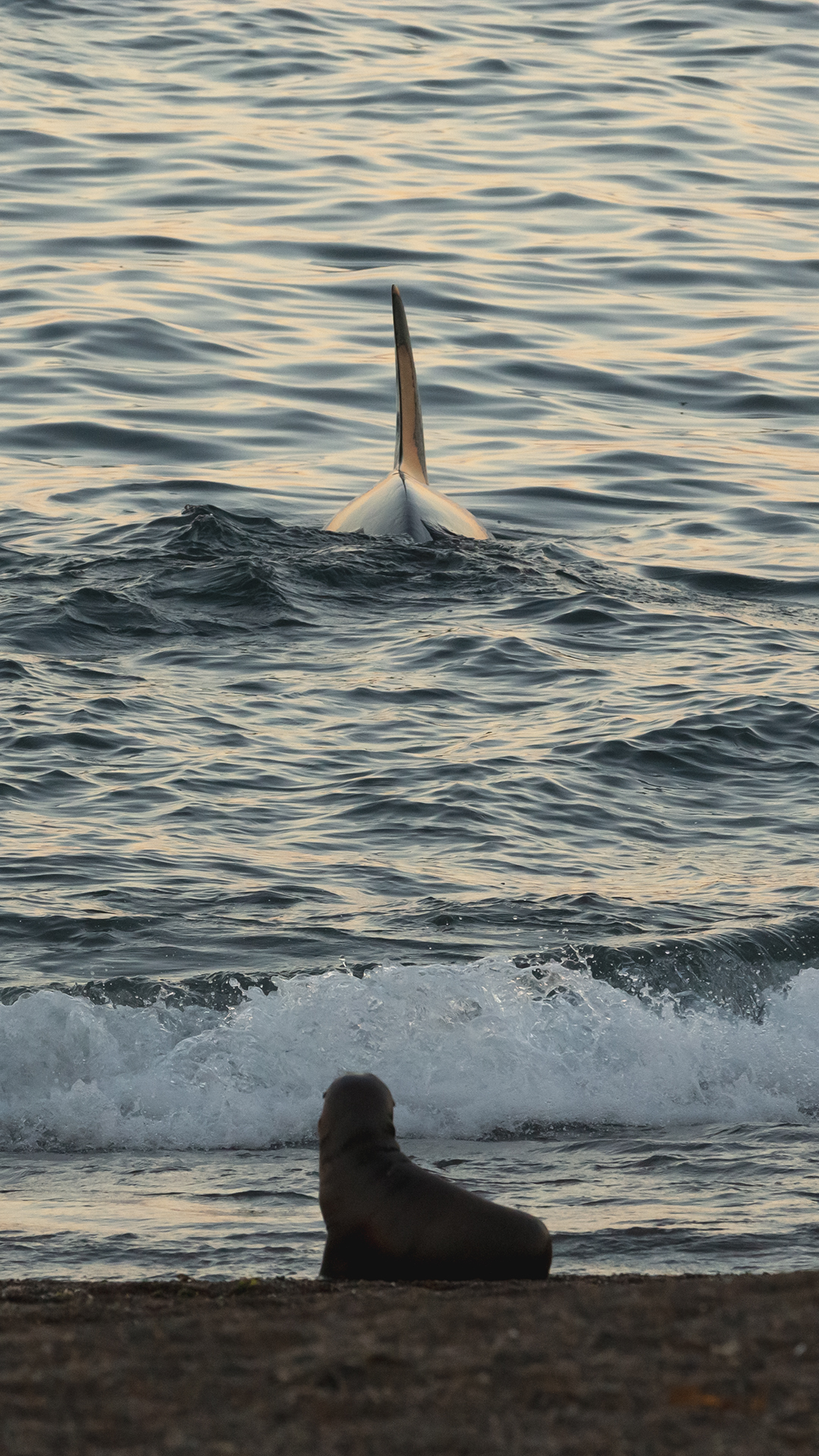
Read more about the exciting days in Patagonia
16-25 MARS 2027
Throughout the trip, Tom Svensson will be available to offer photography advice and tips, as well as assistance with image editing and critique. Tom will also give lectures and share insights into his photographic approach. Exact times for these sessions will be arranged based on the photo activities. During the entire journey, you’ll have the opportunity to receive personal guidance from Tom.
DAY 1, (March 16) – ARRIVAL
On the first day you will be met at Trelew Airport. From there, a one‑hour bus ride takes us to Puerto Madryn, where we check into the first‑class Dazzler by Wyndham Puerto Madryn Hotel. The rest of the day is free to relax and settle in. Because of the time change, only an informal gathering will be held in the hotel bar for those who wish to attend.
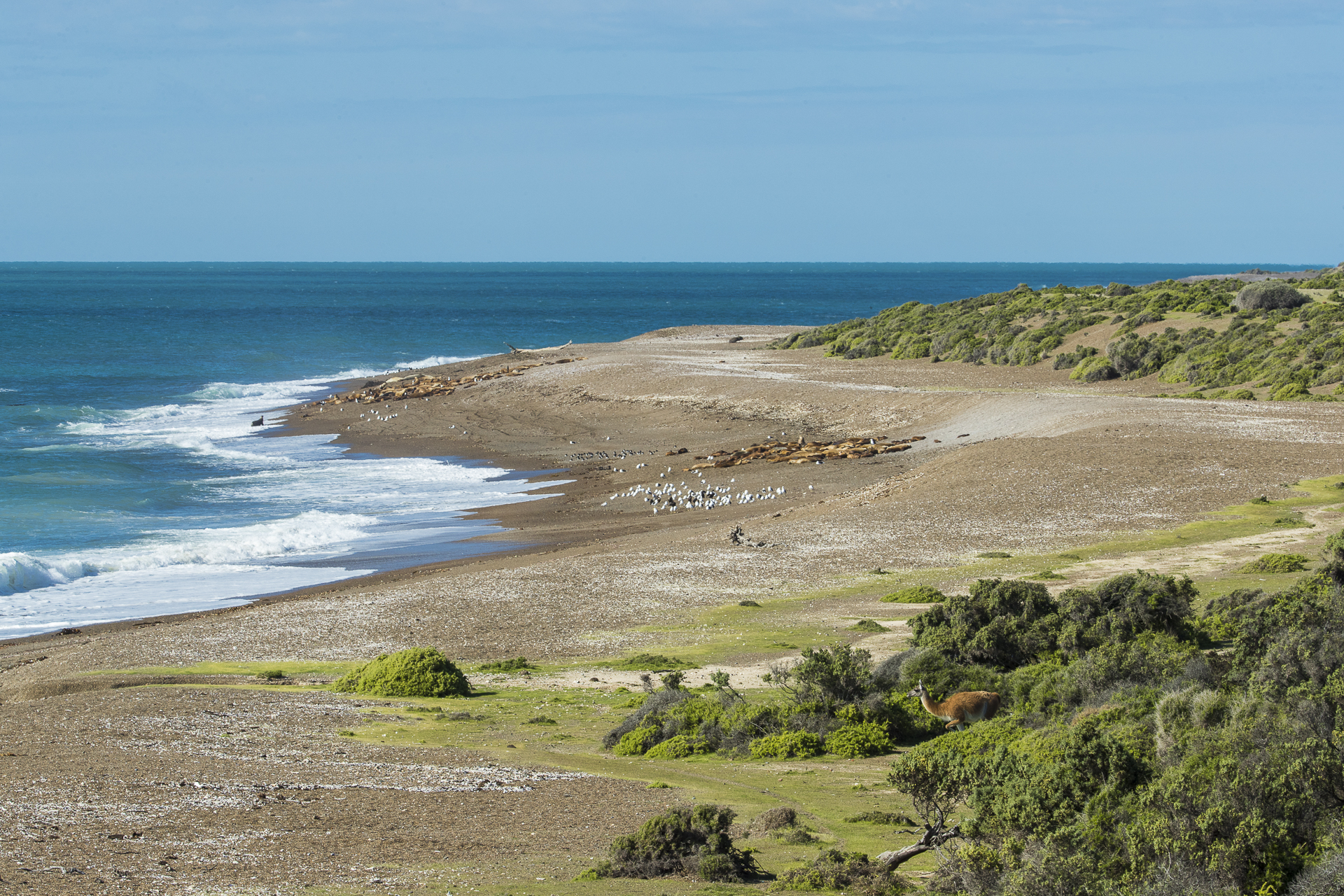
DAY 2, (March 17) – DOLPHINS, PENGUINS & ELEPHANT SEALS
After breakfast we leave Puerto Madryn and head to the mouth of the Chubut River, where we embark on a boat trip in open water to look for the so‑called “pandas of the sea” — Commerson’s dolphins.
This species is one of the smallest dolphins in the world. Although relatively common in local feeding areas, it is still little known globally. The total population is still uncertain, but it is known to be decreasing due to overfishing, which reduces food availability, as well as incidental entanglement in fishing nets. Like all dolphins, they are incredibly fast and unpredictable, making them a fantastic challenge for photographers.
After the boat tour, with fresh memories and images, we continue south to Punta Tombo, one of the largest colonies of Magellanic penguins on the continent.
During the roughly 90‑minute drive we can relax and enjoy our packed lunch while the guide shares interesting facts about the penguins we will soon encounter.
The day ends in the beautiful evening light at Isla Escondida, a tranquil, non‑touristic beach about 120 km south of Puerto Madryn. Here you can often see groups of young elephant seals resting in the sun while they molt. (B, L, D)

DAY 3, (March 18) – SEA LIONS & MAGNIFICENT VIEWS
Today we visit the protected natural area Punta Loma, the first nature reserve established in the province of Chubut. It harbors a significant colony of South American sea lions and Magellanic cormorants, offering fantastic opportunities to observe and photograph these characteristic species along with the rich fauna living in the reserve.
Around lunchtime we arrive at Estancia El Pedral, where we enjoy a traditional Patagonian lamb barbecue, cooked over an open fire and served with the warm hospitality for which the ranch is known – accompanied, of course, by a glass of Argentine wine. After lunch we continue to Punta Ninfas, an impressive geographical landmark marking the transition between the Golfo Nuevo and the Atlantic. Here dramatic views of the coastal cliffs await and there is the possibility to descend to the beach to get close to the elephant seals.
Punta Ninfas is also known for occasional orca sightings, as these predators are often attracted to the area by the large number of elephant seals along the coast. We end the day with an exclusive evening visit to the penguin colony at Estancia El Pedral – a growing colony that, unlike many others, preserves its natural environment without any tourist infrastructure. Being in a penguin colony at sunset is truly one of the most unforgettable experiences Patagonia has to offer. (B, L, D)

DAY 4 (March 19) – TOWARDS PENINSULA VALDÉS
After breakfast, at a leisurely pace, we head toward Península Valdés, a protected natural area that has been designated a UNESCO World Heritage Site. During the journey our guide will share stories about the region’s history, the creation of the reserve, its current conservation status, and the ecological significance of the area.
Along the drive we make several stops to observe and photograph the local wildlife and vegetation. We also visit a visitor centre, where we can take a short break, use the facilities, and explore the informative exhibits — an excellent way to gain a deeper understanding of the peninsula’s history, geography, and unique ecosystems.
After checking into the Del Nómade Eco Hotel in Puerto Pirámides and having lunch at a local restaurant, we visit Punta Pirámides, a protected area that hosts one of the largest colonies of South American sea lions on the peninsula. This is also a fantastic place to photograph species such as the Snowy Sheathbill and Dolphin Gull, along with other characteristic coastal birds. (B, L, D)

DAY 5–9, (March 20–24) – ATTACK CHANNEL
Early every morning, we head out for a half-hour drive to Punta Norte and the beach known as “Attack Channel.” The day begins with us, in order not to disturb the sea lions, crawling out onto the beach where we set up our equipment for the day. We then stay there from about three hours before high tide until three hours after, waiting for the orcas to arrive. It’s common to see them swimming along the shore, hunting for sea lion pups playing in the waves — and the chance to witness an orca attack is truly worth the wait.
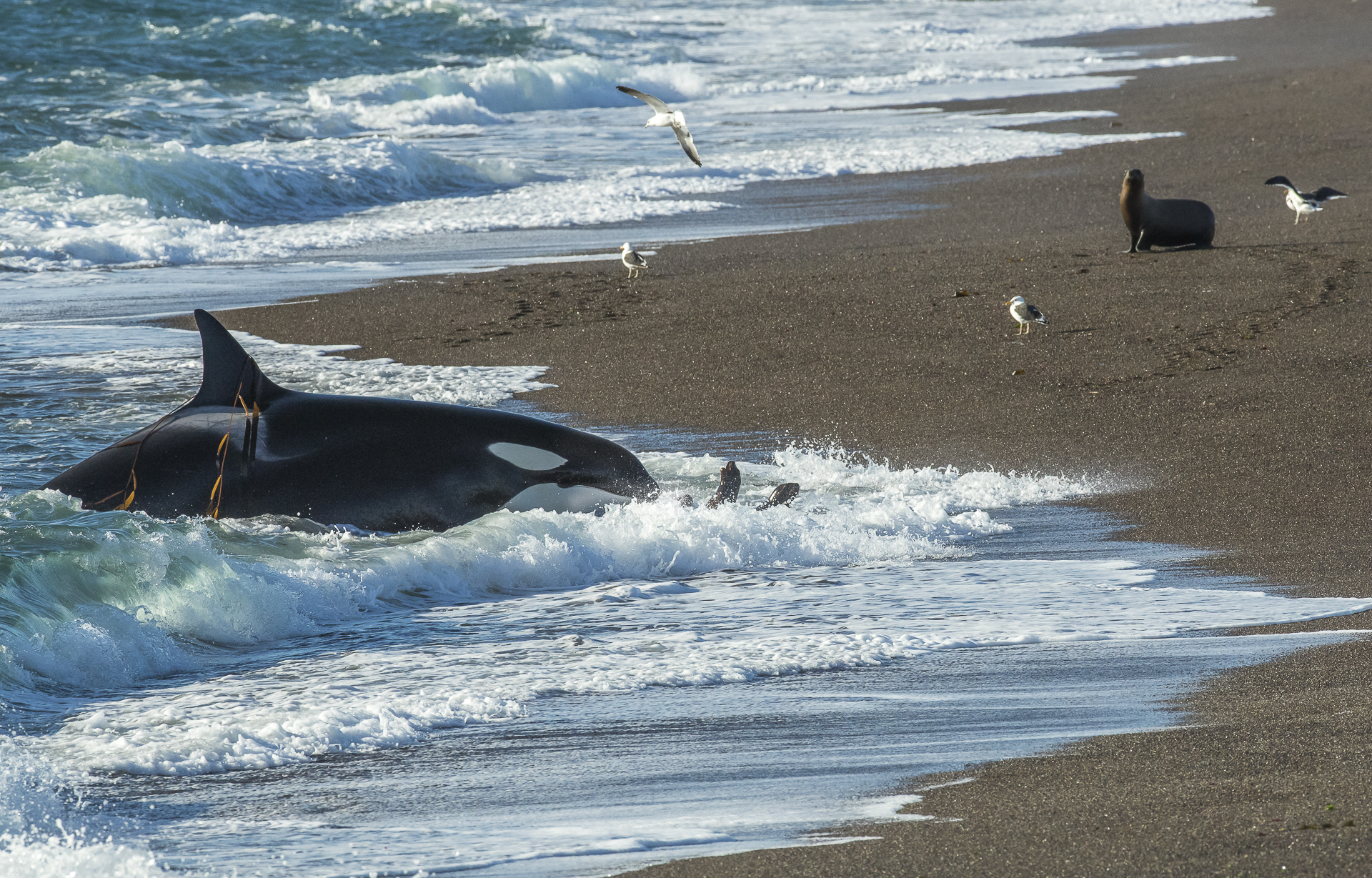
To make sure we don’t miss anything, we bring a picnic lunch with us to the beach. When we’re not photographing at Attack Channel, we go on photo excursions and have the opportunity to photograph everything from flocks of flamingos to elephant seals and much more. (B, L, D)
DAY 10, (March 25) – DEPARTURE
After breakfast, we head to the airport for our onward flight home. (B)
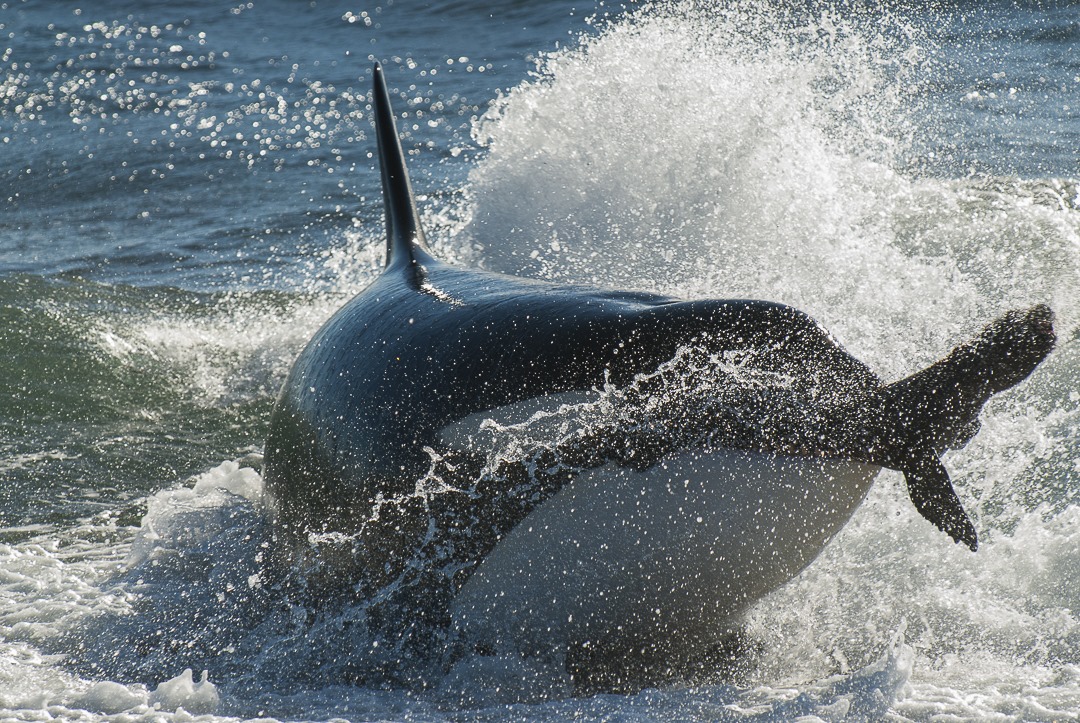
PHOTO OF THE TRIP
A few weeks after returning home, once you’ve had time to go through your photos from the trip, you’ll have the opportunity to submit your best images from the journey to Tom, who will select the “Photo of the Trip.” The winner automatically advances to the final of the “Photo of the Year 2027” competition and competes for great prizes.
PHOTOGRAPHER
PHOTOGRAPHER
TOM SVENSSON • Conservation photographer
Tom Svensson is a world-renowned conservation photographer, born in Denmark but raised in Sweden and now based in Fjällbacka. Tom’s great driving force in life is nature conservation, and as he says: “I don’t do it for myself but for my children and grandchildren. If we don’t do it for them now, it will be too late for them to do anything themselves.”
Tom’s skill as a photographer lies in creating images that move people and make a difference. Photography is a powerful way to bring about change, and Tom is regarded as one of the world’s leading figures in this field. He is a member of Naturfotograferna/N and the only Swede to have been accepted into IEPA, the International Environment Photographers Association. Tom is also part of Canon’s Nordic Ambassador Program and a Global Manfrotto Ambassador.
For more information, www.tomsvensson.se
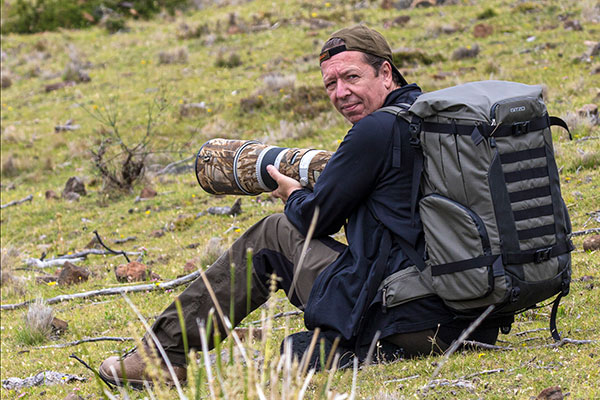
Tom Svensson is a world-renowned conservation photographer
Tom Svensson is a world-renowned conservation photographer, born in Denmark but raised in Sweden and now based in Fjällbacka. Tom’s great driving force in life is nature conservation, and as he says: “I don’t do it for myself but for my children and grandchildren. If we don’t do it for them now, it will be too late for them to do anything themselves.”
Tom’s skill as a photographer lies in creating images that move people and make a difference. Photography is a powerful way to bring about change, and Tom is regarded as one of the world’s leading figures in this field. He is a member of Naturfotograferna/N and the only Swede to have been accepted into IEPA, the International Environment Photographers Association. Tom is also part of Canon’s Nordic Ambassador Program and a Global Manfrotto Ambassador.
For more information, www.tomsvensson.se
HOTEL
HOTEL
PRICE, FACTA & BOOKING
PRICE, FACTS & BOOKING
PRICE
Price per person: USD 9 950:-
Price includes:
-
All transportation according to the program.
-
Accommodation in shared double room.
-
Meals according to the program (B = Breakfast, L = Lunch, D = Dinner).
-
Activities according to the program.
-
Boat trips.
-
Permit for Attack Channel.
-
Park fees.
-
Participation of Tom Svensson throughout the entire trip.
-
Participation of a local guide.
-
Tips, except for the guide.
-
Hotel and other taxes.
Price does not include:
-
Flight to Trelew, Argentina.
-
Single room supplement: USD 750.
-
Personal expenses such as beverages with meals, telephone, etc.
-
Tips for the local nature guide, approximately 10–15 USD per day.
-
Cancellation protection and travel insurance. See our website under “Other Information.
FLIGHTS
You should arrive in Trelew, Argentina, no later than 5:00 p.m. on March 16. The return flight can be booked at any time on March 25. Once the minimum number of participants has been reached, we will send out flight suggestions.
We recommend arriving in Trelew a day before the program starts, as it’s a long journey with several hours of time difference, and flight delays can occur. If you wish to stay after the trip ends, that is also possible.
If you would like assistance with booking flights or extra nights at the hotel, we are more than happy to help. You are welcome to call us at +46 470 466 40, email info@zoomphototours.com, or mention it when making your booking.
FACTS
Target group: Photographers interested in developing their skills in wildlife and nature photography.
Min/max participants: 5/5.
Other information: For more details about Zoom Photo Tours, terms and conditions, etc., see our website under “Other Information.”
CAMERAEQUPIMENT
- Your digital camera.
- Telephoto lens, preferably up to 600 mm.
- 70–200 mm lens.
- Wide-angle lens, for example 24–70 mm.
- A tripod.
- A computer with Photoshop or Lightroom.
- Extra batteries, chargers, etc.
- Cleaning equipment.
BOOKING
You can book the trip by clicking the button below. You are also welcome to call us at +46 470-466 40 or email us at info@zoomphototours.com
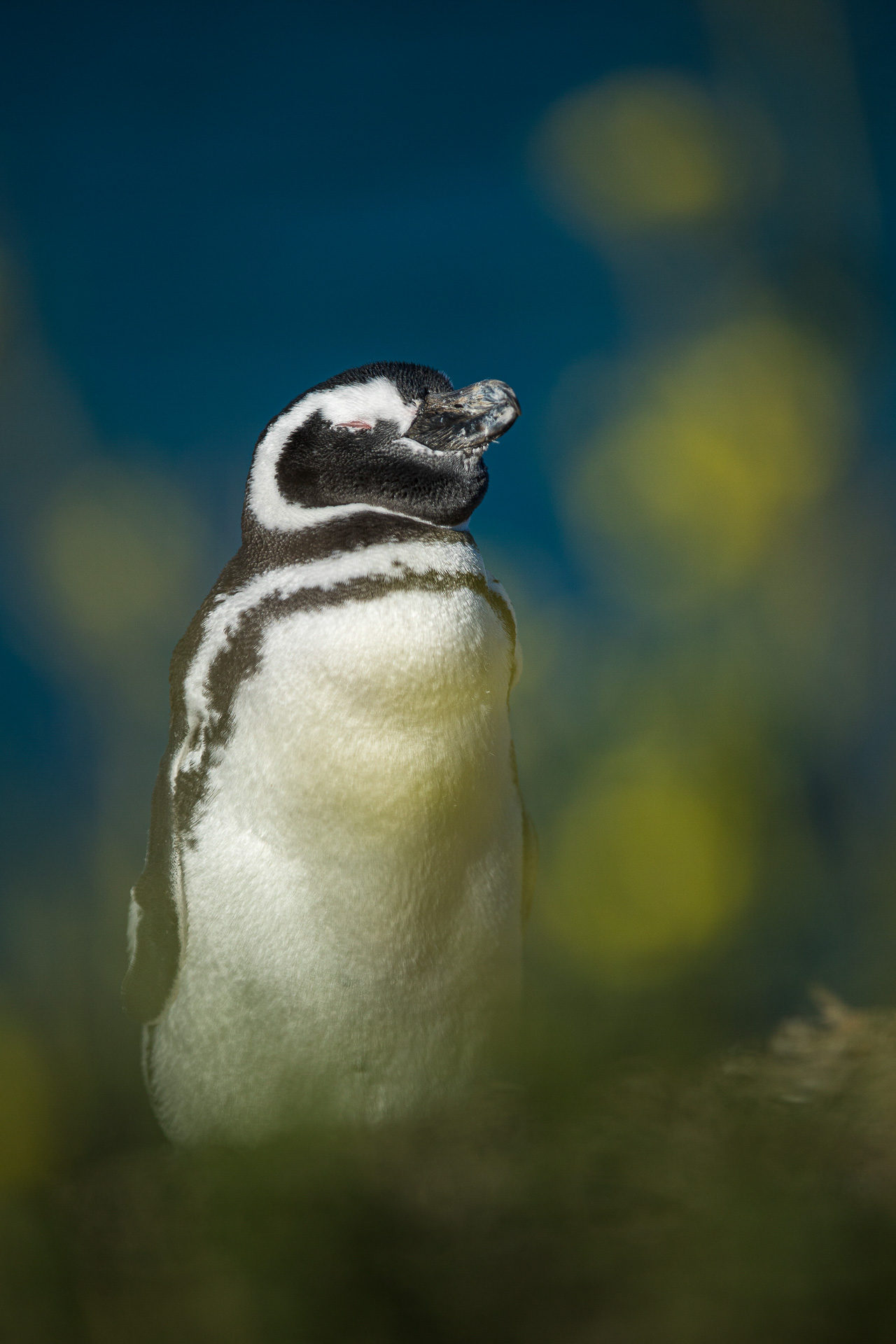

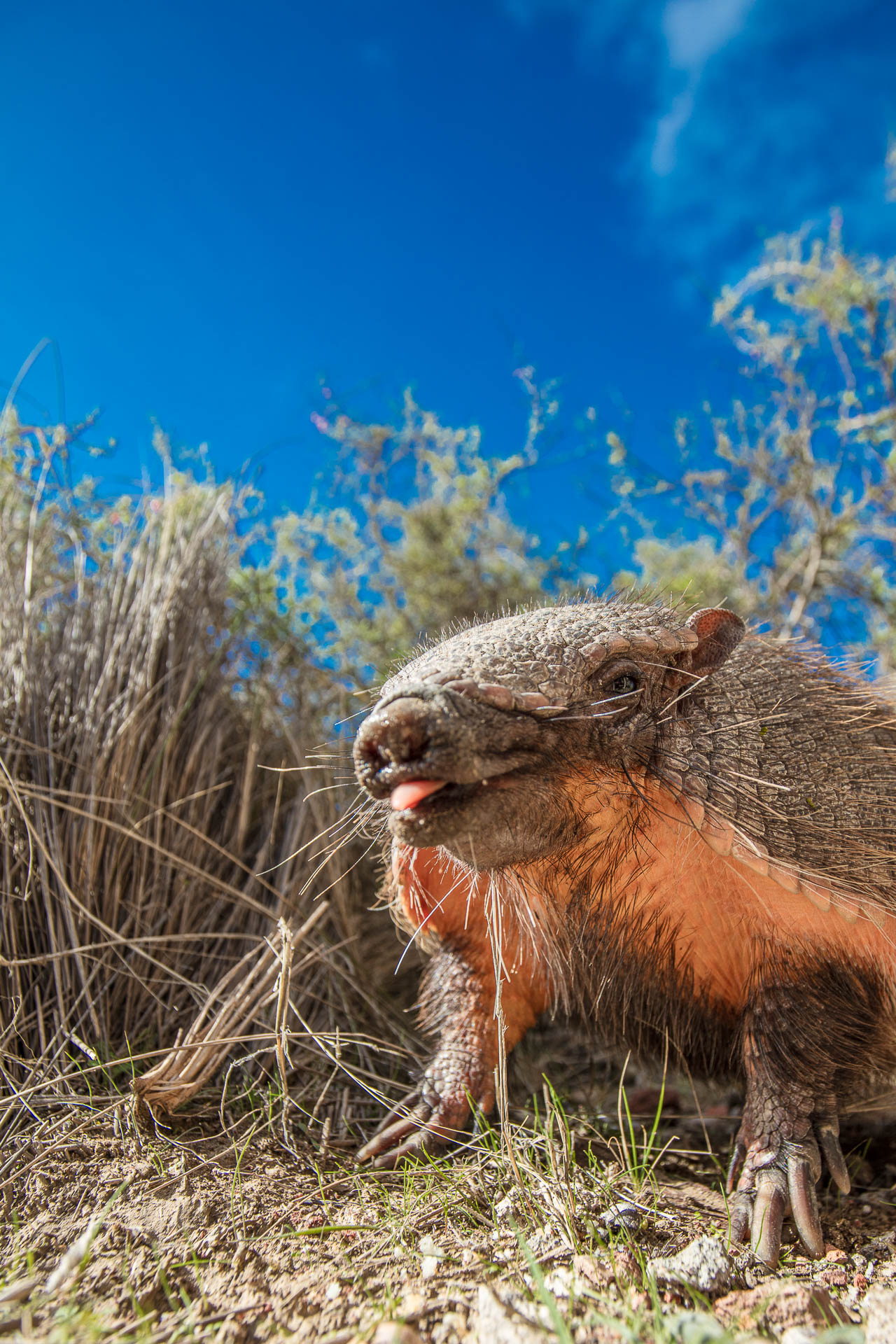
Photo: Tom Svensson, Santiago Sainz-Trápaga och Santiago Cicotti, Gabriel Rojo

